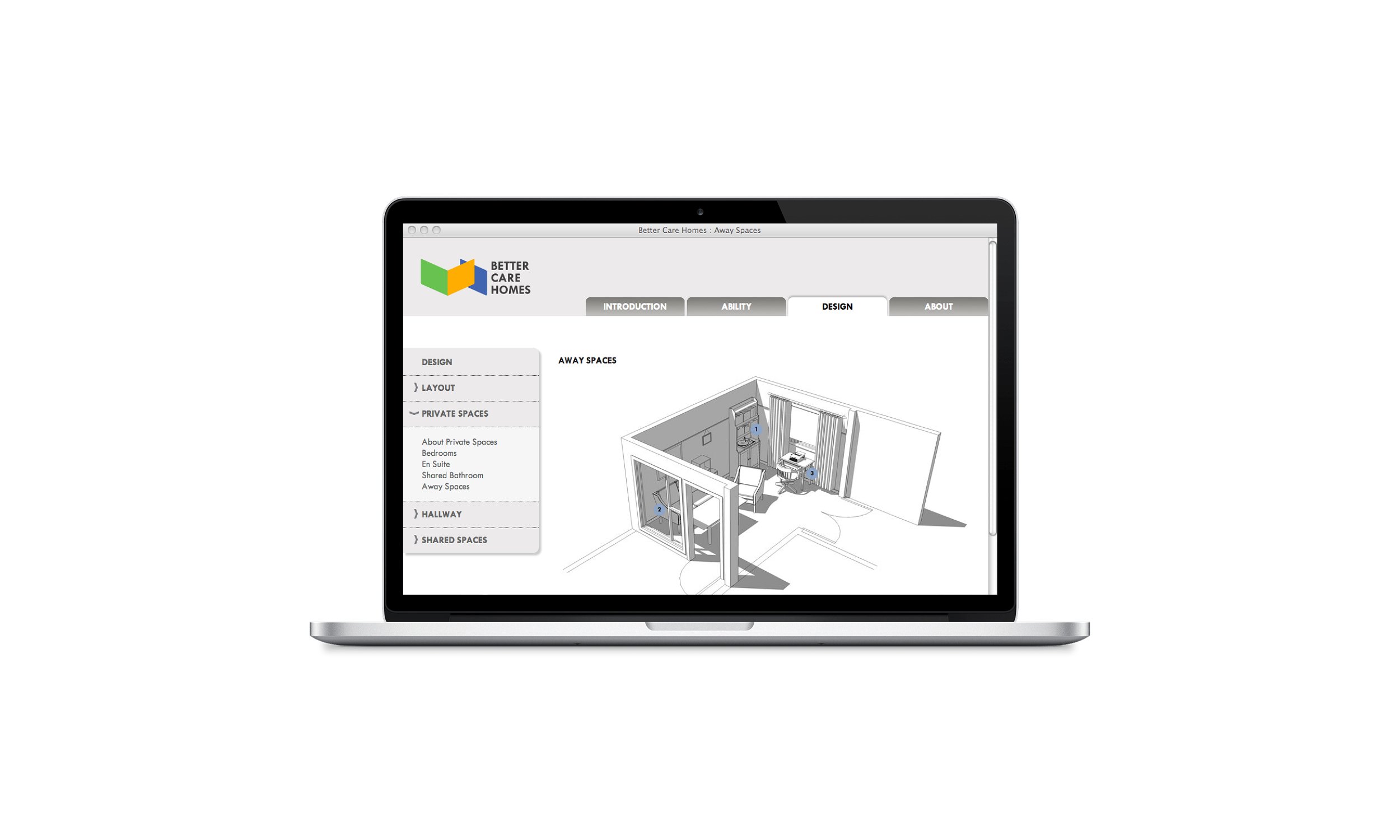Better Care Homes
Reimagining care home design to enable residents with dementia and disability common to aging
A digital resource to help care providers, architects and facility managers to improve residential environments for older people with cognitive, sensory, and motor impairments.
Role
As Senior Researcher at the Helen Hamlyn Centre for Design, I led research and design for cognitive disability. The Better Care Homes project involved literature reviews, field research in 25 care homes, and the design of the website’s content and user experience.
I also led expert-validation workshops and collaborated with a small team to deliver the final platform.
Deliverables
User research & insight
Product definition & vision
Content creation
Interior & furniture design
UI & UX design
Outcomes
Research publication
Presented at UK Dementia Congress
Guidance influenced 118 care homes
New funding stream established for HHCD
Enabling Ability by Understanding Disability
Care homes serve residents with a wide range of cognitive, sensory, and physical impairments, but operators often struggle to meet these needs within tight resource and cost constraints. The Ability section of the website mapped common age-related disabilities and linked them to actionable design guidance. The experience helped care providers focus on residents’ strengths to enable more supportive and independent daily interactions.
Content for the ability section was created by completing a systematic literature review, interviewing individuals with cognitive, sensory, and motor disabilities, creating user profiles and environmental requirements, visiting five exemplar care homes, and critically appraising the guidelines with a panel of expert reviewers.
Design Features to Promote Ability
The Design section provided guidance on everything from overall site layout to the details of room furnishings. It was created to be both accessible to new designers and useful for consolidating expert knowledge. The experience supported better design decisions by linking environmental features to resident abilities and care priorities.
Architectural designs and the website were developed by translating research findings into co-design workshops, which generated ideas for a 3D model of a four-house care facility incorporating all key features. This model was then decomposed and combined with the guidance to form the website content.
Project Data
User need
Residents with dementia and disabilities common to ageing are often stigmatised and may be unable to clearly articulate their physical and psychological needs.
Context
Many care homes originally designed for older adults now serve residents with dementia in buildings not suited to their needs. Staff struggle to deliver support beyond physical care for people with complex needs.
Value proposition & business case
By deeply understanding the concurrent needs associated with dementia and ageing, environments and services can be designed to better support residents, creating affordances for independence and freeing staff time for care beyond physical needs. This improves resident outcomes and strengthens providers’ competitiveness.
Technologies
Environmental psychology; Prosthetic environment evidence base; website.





